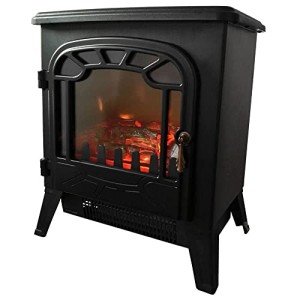One Best Fireplace Success Story You'll Never Imagine
The Best Fireplaces: A Comprehensive Guide for Homeowners
Fireplaces have long been a beloved feature in homes, offering both warmth and an inviting environment. They come in different styles, sizes, and fuel types, permitting property owners to pick one that fits their individual visual and heating needs. This post digs into the very best fireplaces, highlighting crucial functions and considerations to help you make an informed decision.
Kinds of Fireplaces
Comprehending the various kinds of fireplaces is important in choosing the very best alternative for your home. Below are the most frequently utilized fireplaces:
Wood-Burning Fireplaces
- Benefits: Traditional appeal, natural ambiance, and reliable heating.
- Downsides: Requires regular upkeep, ash disposal, and undergoes regional regulations relating to emissions.
Gas Fireplaces
- Advantages: Convenient, clean-burning, and easy to run.
- Disadvantages: Requires a gas line, can be more costly to set up at first.
Electric Fireplaces
- Benefits: Easy installation, low maintenance, and the safest choice for homes with children or family pets.
- Disadvantages: Lack the genuine feel of wood or gas flames, may not warm large spaces successfully.
Pellet Stoves
- Benefits: Eco-friendly, effective, and provide a stable heat output.
- Disadvantages: Requires electricity to run, and pellet supply can be restricted in some areas.
Ethanol Fireplaces
- Advantages: No chimney needed, portable, and ecologically friendly.
- Downsides: Generally less efficient for heating.
A Comparison of Fireplace Types
Type
Installation Cost
Running Cost
Heat Output
Maintenance
Environmental Impact
Wood-Burning
₤ ₤
₤
High
High
Moderate
Gas
₤ ₤ ₤
₤ ₤
Medium-High
Low
Moderate
Electric
₤
₤ ₤
Low
Really Low
Low
Pellet
₤ ₤
₤
Medium
Medium
Low
Ethanol
₤ ₤
₤ ₤ ₤
Low
Extremely Low
Very Low
Top Considerations When Choosing a Fireplace
When you're in the market for a brand-new fireplace, keep the list below consider mind to ensure you choose the best one for your home:
Purpose and Functionality: What do you want your fireplace to do? Is it for heating or aesthetics? Buy Fireplaces UK will assist your option significantly.
Area Availability: Measure the location where you want to install the fireplace. Make sure the picked type fits without overwhelming the area.
Fuel Source: Assess the schedule and cost of various fuel sources in your area to prevent unanticipated expenses.
Setup Complexity: Some fireplaces may require substantial modifications to your existing home structure.
Structure Codes and Regulations: Be mindful of regional laws relating to ventilation, security, and emissions, as these can influence your fireplace option.
Visual Appeal: The style and style of a fireplace can act as a focal point or complement the existing decoration, so choose one that boosts your home's overall aesthetic.
Advantages of a Fireplace
Adding a fireplace to your home affords numerous advantages:
Enhanced Aesthetic Appeal: A fireplace can elevate the decoration of any space, producing a cozy and welcoming atmosphere.
Increased Home Value: A well-installed fireplace can add significant worth to your home, making it interesting potential purchasers.
Energy Efficiency: Modern fireplaces, particularly gas and pellet stoves, can provide effective heating while lowering energy costs.
Emergency Situation Heat Source: In cases of power interruptions, a wood or gas fireplace can serve as a reputable heat source.
Celebration Space: Fireplaces typically end up being the focal point for gatherings, promoting warmth and comfort during friend or family' get-togethers.
Frequently Asked Questions (FAQs)
**Q: How much does it cost to set up a fireplace?A: Installation expenses can differ considerably based upon the type of fireplace, structural requirements, and labor expenses. Basic electric fireplaces might cost around ₤ 300, while custom-built wood or gas fireplaces can run from ₤ 3,000 to upwards of ₤ 10,000. Q: Are electric fireplaces safe?A: Yes, electric
fireplaces are typically safe.
They do not emit carbon monoxide and have no open flames. They often include safety features like automatic shut-off systems. Q: How frequently must I have my chimney cleaned?A: If you use a wood-burning fireplace, it's recommended to have your chimney cleaned a minimum of once a year
**
to prevent creosote accumulation, which can lead to chimney fires. Q: Can I install a gas fireplace myself?A: It's not advisable to set up a gas fireplace without professional support due to the intricacies connected with gas
lines, ventilation, and safety regulations. Q: What are the very best types of fuel for wood-burning fireplaces?A: The best fuel choices include well-seasoned woods like oak, maple, or hickory, as they burn hotter and cleaner compared to softwoods. Choosing the best fireplace for your home
involves considering numerous elements, from aesthetics to operate and security. Each type of fireplace has its unique benefits and possible disadvantages.
Understanding these aspects, in addition to your individual heating requirements and budget restrictions, will assist you in making an informed choice. Eventually, a fireplace can provide not just heat but likewise a rich atmosphere, transforming your home into an inviting sanctuary. 